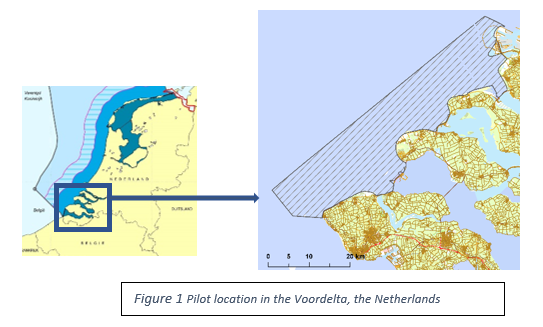RESULTS FROM A PILOT STUDY ON OFFSHORE MUSSEL FARMING IN THE NETHERLANDS: TECHNICAL AND ECOLOGICAL FEASIBILITY UNDER HIGH DYNAMIC CONDITIONS
In the Netherlands, mussel farming has traditionally been concentrated in sheltered waters such as bottom plots in the Wadden Sea and the Eastern Scheldt. However, these areas are facing spatial pressures that limits further expansion. As part of the Dutch Mussel Covenant, efforts are initiated to explore the potential for alternative farming locations outside these conventional areas, including coastal areas such as the such as the Voordelta and offshore wind farms.
These new locations offer promising opportunities to reduce pressure on the space and to enhance mussel production. On the other hand, they also present significant challenges related to environmental dynamics, technical feasibility, regulatory complexity, and financial viability. This pilot study aims to explore the feasibility for offshore mussel farming under highly dynamic conditions.
A pilot study was conducted from 2022 to 2024 approximately 2 km offshore in the North Sea. see Figure 1. The aim of this pilot study was to evaluate the technical and ecological feasibility of offshore mussel farming using two different types of suspended mussel rope systems: 1) a floating double longline and 2) a submerged longline. Both systems were equipped with various rope types and sock materials to test grow out success and mussel seed collecting during reproduction season. During the pilot phase the system was stocked with different types of mussels.
Given the highly dynamics water conditions at the pilot site, a broad range of parameters were monitored throughout the pilot period.
Both systems were equipped with accelerometers and load cells to track the movement of the ropes and the entire system. At the site flow velocity profiles and wave hight were measured at intervals.
Chlorophyll-a concentrations were continuously measured using sensors, both near the pilot location and at a reference site approximately 2 km away.
Mussel growth was also monitored using a standardized method for tracking growth over time.
During the pilot period, we encountered several challenges and gained valuable insights:
- Securing necessary permits was a major bottleneck
- Robust technical performance of the system although over dimensioned relative to actual forces.
- Local seed outperformed translocated seed; growth and survival depended on depth and exposure to movement
- Operational constraints at sea limited timely management, which adversely influenced the results
This presentation will highlight these findings and implication for mussel farming under high dynamic conditions.
